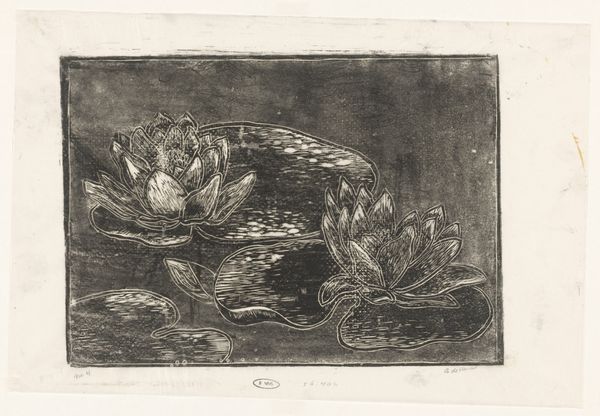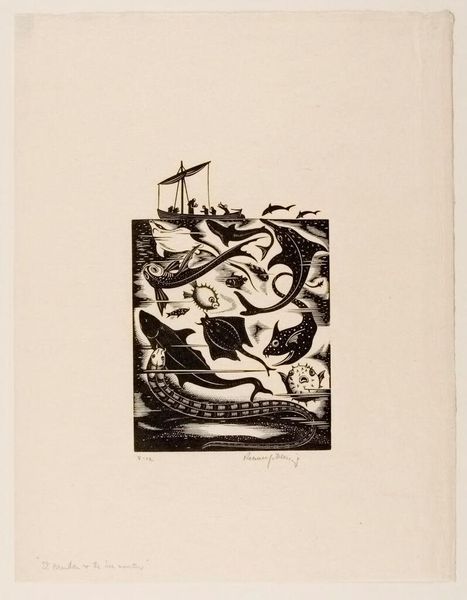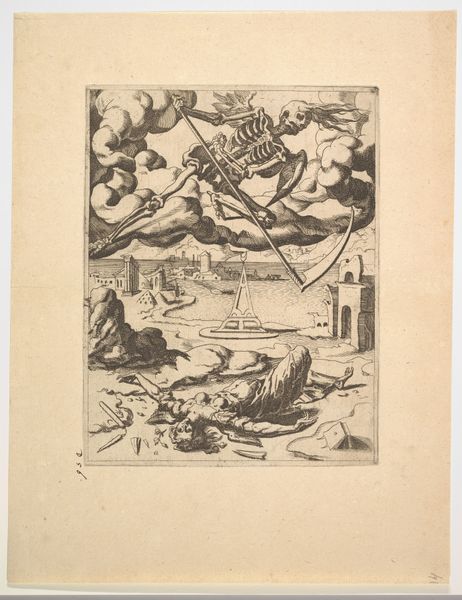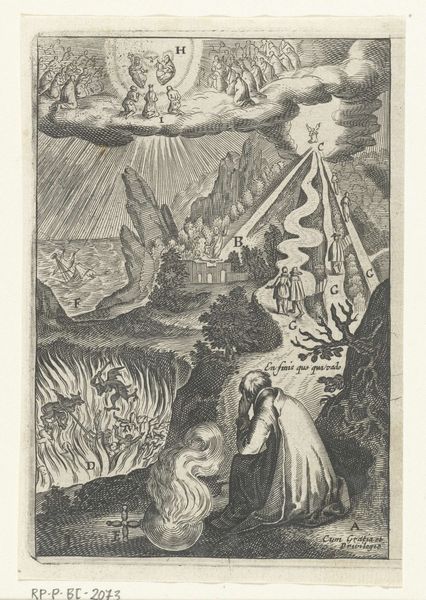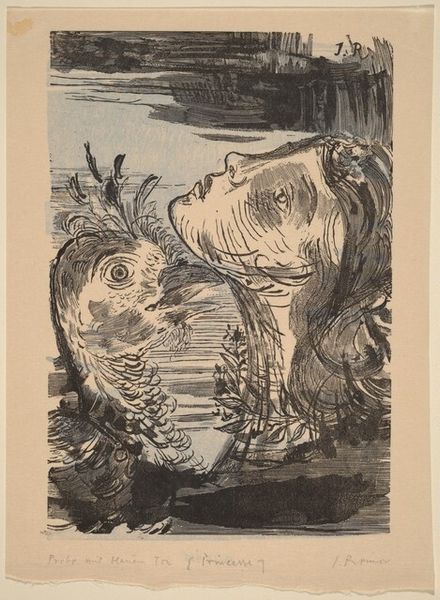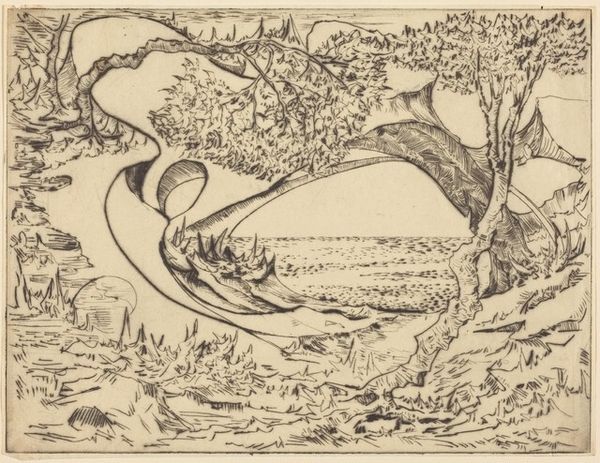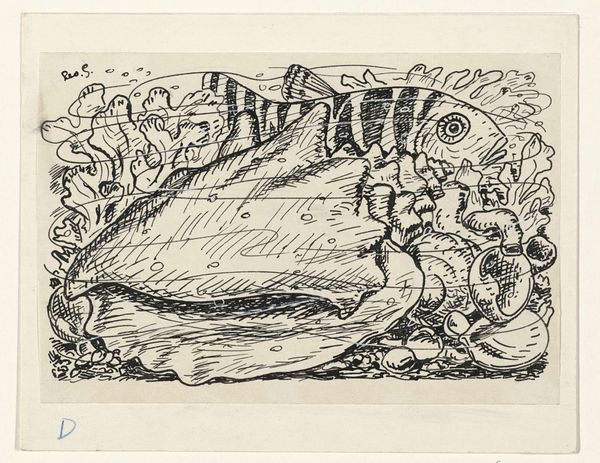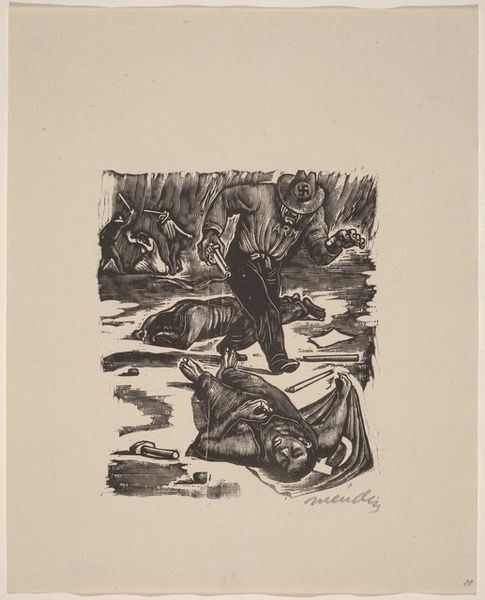
drawing, print, ink
#
drawing
#
cubism
#
ink drawing
# print
#
landscape
#
figuration
#
ink
#
modernism
#
monochrome
Dimensions: image: 26.67 × 20.96 cm (10 1/2 × 8 1/4 in.)
Copyright: National Gallery of Art: CC0 1.0
Curator: This is “The Frog,” or "Les Grenouilles," by Pablo Picasso, created in 1936 using ink. The print showcases several frogs amidst lily pads and water. It has such a simple but playful character, wouldn't you agree? Editor: It does project a strange kind of quiet exuberance, achieved through an almost minimalist approach. Note the stark contrast and line work: the reduction to essential forms certainly focuses one’s attention on the thematic subject. It almost feels allegorical. Curator: Allegorical, interesting. I was thinking more of its potential commentary on naturalism amidst the political upheaval that Picasso was experiencing at the time in Spain. Consider, perhaps, that the frogs on their lily pads can suggest a detachment from a troubled land. It brings an interesting counterpoint to his usual focus. Editor: Your point is well-taken, and given the artist's background, considering the broader history and political context gives insightful layers to the analysis. However, if we step back for a moment to purely examine form, note how the arrangement of negative space is quite daring. The contrast provides more substance, with visual interest that defies its ostensibly basic subject matter. It also highlights the two-dimensional aspects. Curator: Absolutely, it’s a dynamic tension—simplicity of subject juxtaposed with complexity of form. It seems as if the interplay between dark and light is its own language here, creating a visual rhythm not dissimilar from musical notation. The eye dances across the composition, always finding a point of engagement, regardless of its limitations of shade. Editor: Indeed. It's precisely these internal, structural relations which convey deeper meaning. It's almost semiotic; frogs as signifiers detached from any "real world," representing only the pictorial language itself. Curator: That makes us think of both art for art’s sake, or, viewed within the lens of history, could they be seen to be reflecting larger sentiments prevalent at the time, albeit in the abstract terms. There’s a tension in both modes of interpretation, maybe reflecting inherent, unresolvable oppositions? Editor: Perhaps we see in this ink drawing, then, not simply frogs on lily pads, but a microcosm of how meaning itself emerges: fluctuating between formalism and historical circumstance. Fascinating.
Comments
No comments
Be the first to comment and join the conversation on the ultimate creative platform.

